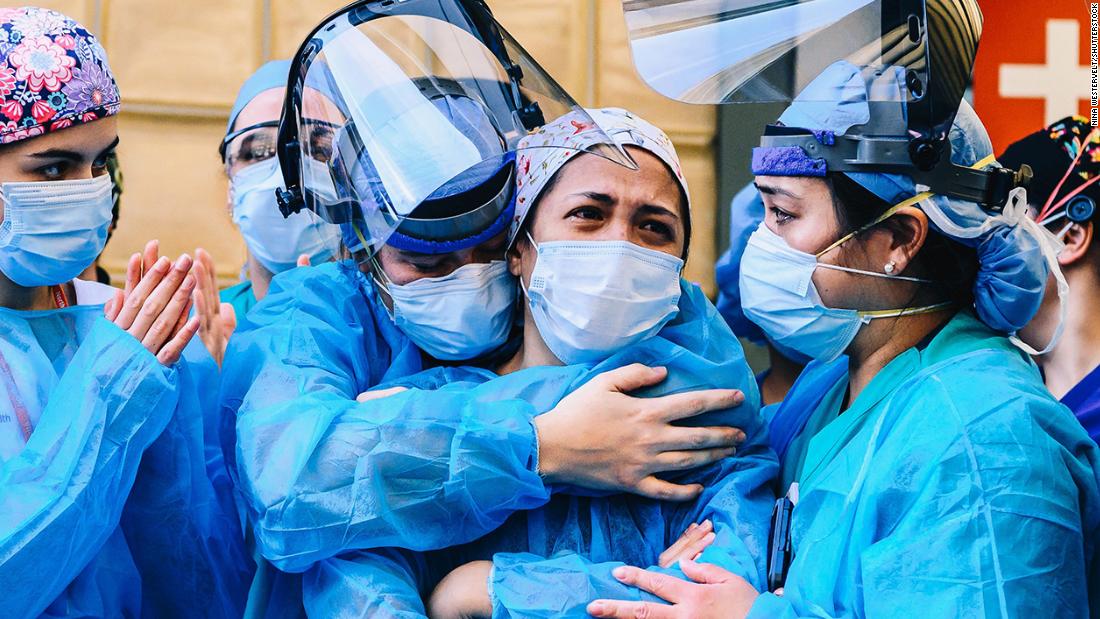[ad_1]
“You’re making a big mistake. It’s going to cost lives,” Dr. Irwin Redlener, a pediatrician and disaster preparedness specialist at Columbia University Medical Center, told CNN on Friday.
States are knowingly reopening against the advice of medical experts and are making “a judgment call … that there’s an acceptable level of risk and harm because of need or desire to open up,” CNN national security analyst Juliette Kayyem said Friday.
“There will be more dead people. Just say it,” Kayyem told CNN’s “New Day.” “It’s an experiment we’re living in real time.”
“And, I mean, obviously you could get away with that, but you are making a really significant risk,” Fauci said during CNN’s town hall on coronavirus Thursday night.
Virus is ‘running amok’ in New Mexico city
All roads to Gallup have been closed, businesses must close between 5 p.m. and 8 a.m. and vehicles can only carry two individuals, according to the governor’s order. The governor is recommending that residents remain at home except for emergency outings and those essential for health and safety.
“The spread of this virus in McKinley County is frightful,” Lujan Grisham said. “And it shows that physical distancing has not occurred and is not occurring. The virus is running amok there. It must be stopped, and stricter measures are necessary.”
Navajo Nation President Jonathan Nez said he supports the decision as many members reside in Gallup and travel in the area.
The protests took place on the same day that local health officials announced the highest increase in new cases since the outbreak began.
FDA approved drug to treat several cases of Covid-19
The US Food and Drug Administration issued the emergency approval, which is a lower regulatory bar than full FDA approval, saying the benefits of the drug outweigh its risks in patients.
Denise Hinton, the FDA’s chief scientist, said in the authorization letter that there is “no adequate, approved, and available alternative to the emergency use of remdesivir for the treatment of COVID-19.”
While the optimal dosing is still unknown, Gilead Sciences, the drug’s manufacturer, recommends that patients on ventilators take the drug through an IV for 10 days and non-ventilator patients only five days.
Gilead CEO Daniel O’Day said Friday in an Oval Office event that the company will be working with the federal government “to make sure that we get that to the patients in need as quickly as possible.”
Earlier on Friday, O’Day said in an interview on NBC’s “Today” show that researchers are examining whether the drug could be delivered as a subcutaneous injection or orally.
That would be “with the intention that maybe we can treat patients earlier — earlier in the hospital setting and perhaps even outside of the hospital setting,” O’Day said.
States are easing and imposing restrictions
Limited testing and travel fueled coronavirus spread, CDC says
International travel and a lack of testing, among other factors, accelerated the spread of coronavirus in the early days of the US outbreak, a report released Friday by the US Centers for Disease Control and Prevention shows.
Dr. Anne Schuchat, the CDC’s principal deputy director, wrote that four major factors sped transmission of the virus in March.
- Travelers infected elsewhere importing the virus to the US.
- Attendance at professional and social events.
- Introduction of the virus into facilities prone to amplification, including nursing homes and high-density urban areas.
- Issues detecting the virus like limited testing, the virus’ emergence during flu season, and people who were asymptomatic or pre-symptomatic.
While it’s impossible to quantify the contribution that each factor had in the outbreak, Schuchat says, recognizing them would help inform future responses as some regions scale back mitigation measures.
Two more years of pandemic misery predicted
As states grapple with the most efficient way to reopen their economies, experts are warning that relief may not be coming any time soon.
“This thing’s not going to stop until it infects 60 to 70% of people,” said Michael Osterholm, who directs the Center for Infectious Disease Research and Policy at the University of Minnesota. “The idea that this is going to be done soon defies microbiology.”
Osterholm has written about pandemics for 20 years and served as an adviser to several presidents. He said it’ll take nearly two years for herd immunity to gradually develop among humans.
A vaccine could help, the report said, but isn’t expected quickly. “The course of the pandemic also could be influenced by a vaccine; however, a vaccine will likely not be available until at least sometime in 2021,” the report reads.
CNN’s Arman Azad, Elizabeth Cohen, Gisela Crespo, Jay Croft, Maggie Fox, Jacqueline Howard, Jamiel Lynch and Amanda Watts contributed to this report.
[ad_2]
Source link






